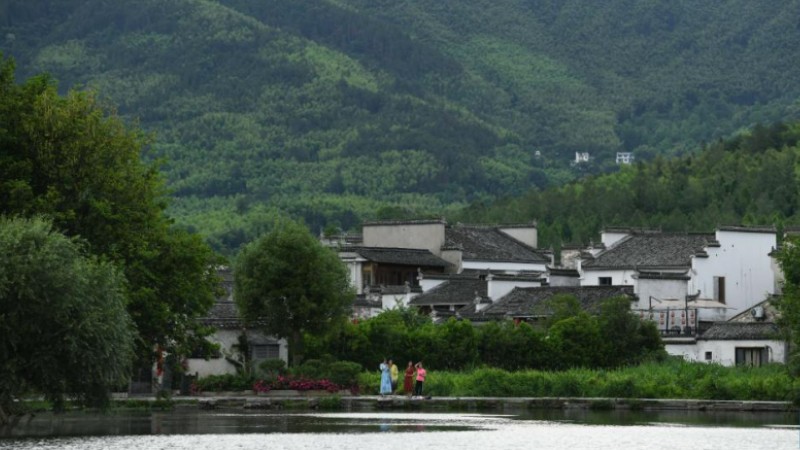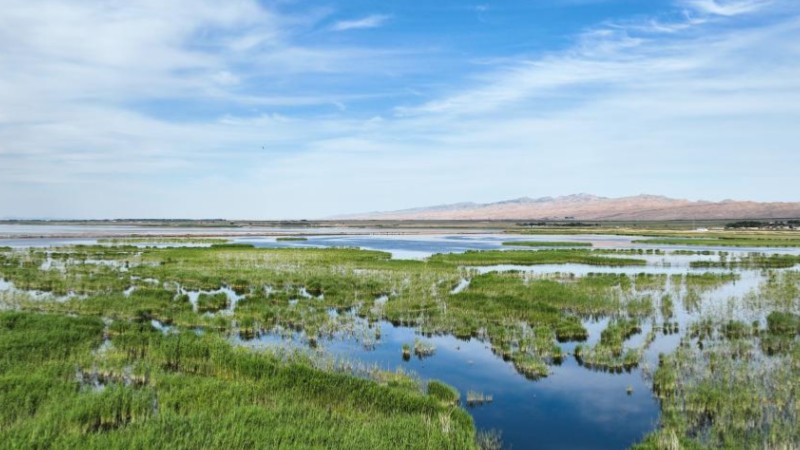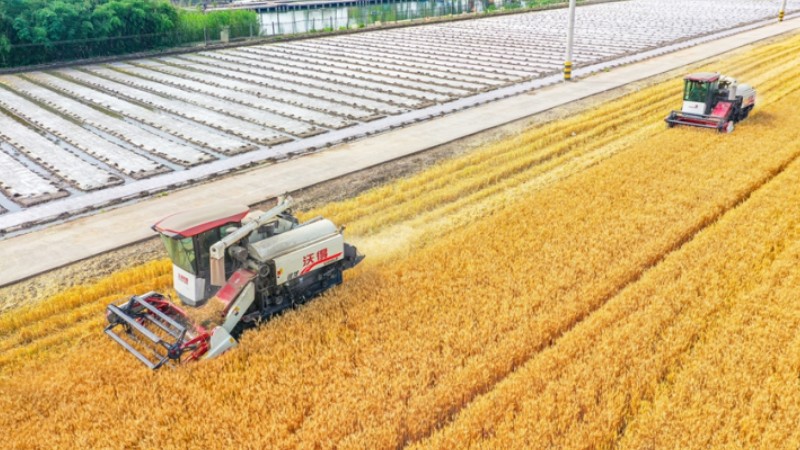China takes measures to transform saline-alkaline land into fertile soil
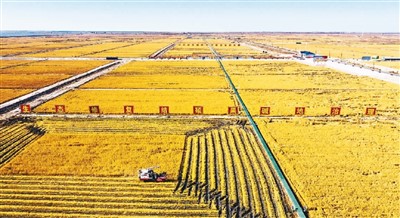
Photo shows a harvest scene in Haituo township of Da'an city, located in the western part of northeast China's Jilin Province. By taking various measures to treat saline-alkaline land, which used to cover more than 10 million mu (about 666,700 hectares), the western part of Jilin Province has created 466,200 mu of arable farmland and increased crop production by more than 50 million kg. (Xinhua/Li Xiaoming)
China has about 1.5 billion mu of saline-alkali land, the third largest in the world, which accounts for nearly 80 percent of its total area of arable land. In recent years, various regions in the country have strengthened management and upgrading of saline-alkaline land, reducing its area and making positive progress in its utilization.
Hu Changhai, a grain grower in Wuzhuang village in Dongying city, east China's Shandong Province, has recently been busy harvesting wheat. He said in the past, the village was blighted by alkaline soils and nothing could grow there.
"Dongying city has about 3.41 million mu of saline-alkaline land, which accounts for 38.2 percent of the total area of this kind of land in Shandong Province," said an official from the city's bureau of agriculture and rural affairs.
Dongying has 1.96 million mu of saline-alkaline land for farming purposes, which accounts for about 60 percent of the city's arable land. Transforming saline-alkaline land into fertile soil has always been an important task for promoting the development of agriculture in Dongying.
Saline-alkaline land is found in more than 80 countries and regions around the world, covering a total area of over 830 million hectares. In these areas, the soil salt and alkali content is higher than normal levels, making the land very difficult to farm. When the soil salt content exceeds 0.6%, the crop seedling emergence rate will be less than 50 percent and crop production will be 90 percent lower.
China has 1.5 billion mu of saline-alkaline land that appear in different forms, said Liu Zhixin, a researcher from the saline-alkaline land utilization service center of the Shandong Yellow River Delta Agricultural Hi-tech Industry Demonstration Zone in Dongying. Liu added that about 500 million mu of saline-alkaline land shows potential for exploitation and utilization.
An official from China's Ministry of Agriculture and Rural Affairs said that based on China’s prior experience, after the transformation of saline-alkaline land, rice yield per hectare can reach 6 tonnes.
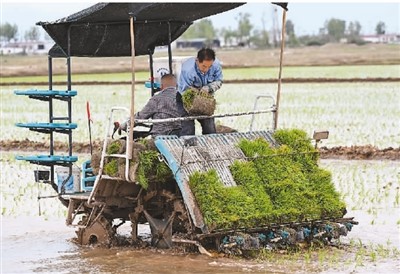
Farmers plant rice seedlings in a field in Zhaojun town, Dalate Banner in north China's Inner Mongolia Autonomous Region. Rice planting is currently underway on 38,000 mu of fields transformed from saline-alkaline land in Dalate Banner. (Xinhua/Liu Lei)
"After 10-plus years of efforts, the saline-alkaline land is turning into fertile soil for crop planting. Last year, wheat yield per mu surpassed 460 kg, hitting a record high for saline-alkaline land. This year, the yield is expected to be as high as last year and I hope it will be higher," said Hu.
Treating saline-alkaline land is difficult, but one effective solution is creating the proper water-salt balance in soil.
"We've started to adopt new solutions to reduce soil salt content, including washing away salt with water conveyed through pipes, a method that also saves water. We also replaced 10-meter-wide water channels with narrower ones. Through such methods, we can lower salt content in soil to below 0.3% from between 0.4% and 0.6% in three years and reduce water consumption by over 38 percent," said Liu.
Shandong has nearly 9 million mu of saline-alkaline land. Through this transformation, the province's saline-alkaline land can be used to grow 3.6 million mu of grain, 1 million mu of cotton, 1 million mu of jujube trees and 100,000 mu of forage grass.
Northwest China's Xinjiang Uygur Autonomous Region is using plants for the treatment of saline-alkaline land. Tian Changyan, a researcher from the Xinjiang Institute of Ecology and Geography under the Chinese Academy of Sciences (CAS), said Xinjiang has the largest area of saline land in China, and this problem has affected agriculture in the region.
"We found that some plants can absorb salt from the soil, and we planted some of those that can be used as forage or have economic value. Thanks to these plants, the soil salt content went down 40 percent in the first year of planting, over 60 percent in the second year, and between 85 and 90 percent in the third year," said Tian.
Cultivating saline-alkaline tolerant crop varieties is also necessary. Recently, Xie Qi, a researcher from the Institute of Genetics and Development Biology under the CAS and his team discovered AT1, an alkaline-tolerant gene.
"We experimented with planting some genetically-modified crops on saline-alkaline land and found that annual sorghum yields grew by 20.1 percent, millet by 19.5 percent, and rice by 22.4 to 27.8 percent," said Xie.
The National Technology Innovation Center for Comprehensive Utilization of Saline Alkali Land was recently founded in Shandong Province. Jointly established by the Chinese Academy of Agricultural Sciences and 18 saline-alkaline land research institutions and enterprises, the center focuses on saline-alkali land biological breeding, capacity enhancement and ecological utilization.
The center will take about three years to cultivate more than 80 new varieties of grain, oil, forage and special economic crops that are resistant to moderate salinity, and increase the comprehensive capacity per unit area by more than 25 percent.
Photos
Related Stories
- Geo-chemical quality of China's land in good condition: report
- China promotes use of land, sea for major projects
- China restores over half of its desertified land
- Steel slag-turned soil conditioner changes saline-alkali land into fertile farmland
- NW China township turns desert areas into arable land
- 25 pct of China's land area demarcated for ecological protection
- Central government urges better protection of arable land
- Beijing reports construction land slash in 2019
- Booklet of guideline for stable land contracting published
- China streamlines land and space planning system
Copyright © 2023 People's Daily Online. All Rights Reserved.






